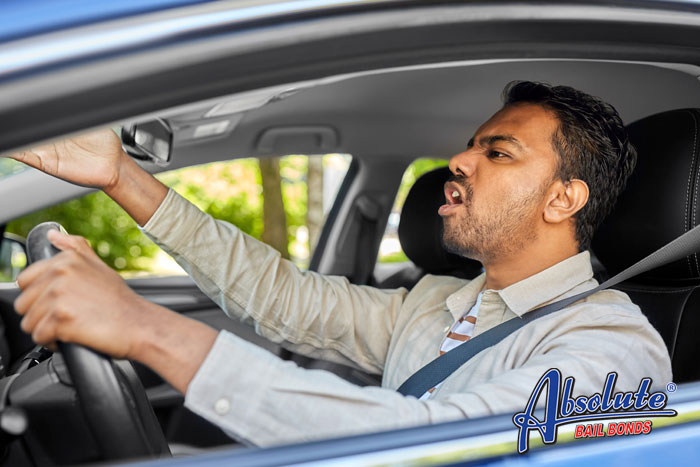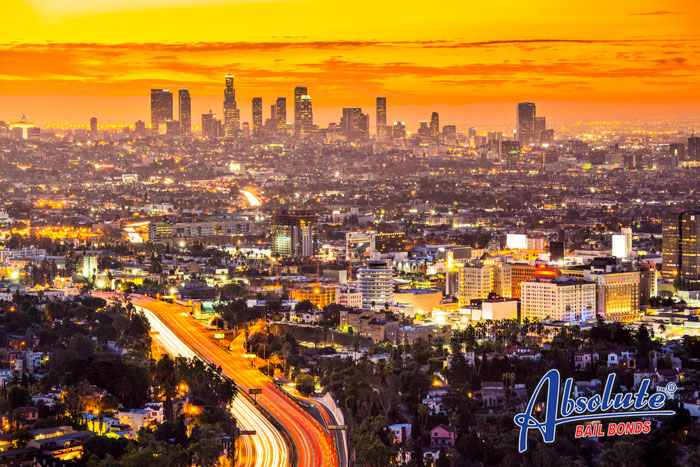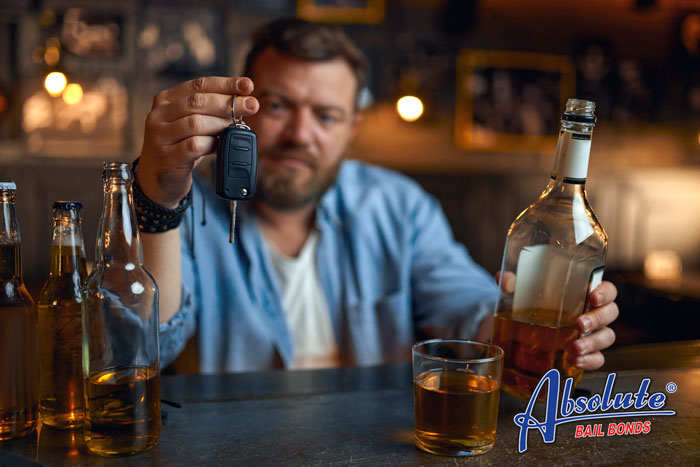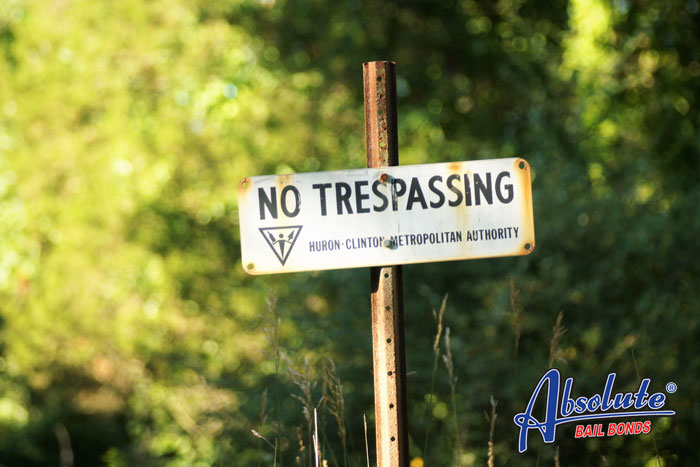
Consequences of Reckless Burning in California
Finally, it’s summertime! Between the increased daylight hours and warmer weather, you’re finally able to do all of your favorite outdoor activities, including having your friends over for a bonfire.
Before you strike a match, you need to make sure you’ve taken the proper steps so that you don’t find yourself dealing with a reckless burning charge.
California’s Penal Code 452 PC exists exclusively for people who either start an illegal fire or who are reckless with fire. The law prohibits you from randomly setting fire to:
- Structures
- Property
- Forest land
The way the law is written, even if you don’t deliberately set fire to something, but simply have a campfire, you can still be charged with being reckless with fire if you fail to follow basic protocols and the fire gets out of control.
Penal Code 452 PC states:
“A person is guilty of unlawfully causing a fire when he recklessly sets fire to or burns or causes to be burned, any structure, forest land or property.
(a) Unlawfully causing a fire that causes great bodily injury is a felony punishable by imprisonment in the state prison for two, four, or six years, or by imprisonment in the county jail for not more than one year, or by a fine, or by both such imprisonment and fine.
(b) Unlawfully causing a fire that causes an inhabited structure or inhabited property to burn is a felony punishable by imprisonment in the state prison for two, three, or four years, or by imprisonment in the county jail for not more than one year, or by a fine, or by both such imprisonment and fine.
(c) Unlawfully causing a fire of a structure or forest land is a felony punishable by imprisonment in the state prison for 16 months, two or three years, or by imprisonment in the county jail for not more than six months, or by a fine, or by both such imprisonment and fine.
(d) Unlawfully causing a fire of property is a misdemeanor. For purposes of this paragraph, unlawfully causing a fire of property does not include one burning or causing to be burned his own personal property unless there is injury to another person or to another person’s structure, forest land or property.
(e) In the case of any person convicted of violating this section while confined in a state prison, prison road camp, prison forestry camp, or other prison camp or prison farm, or while confined in a county jail while serving a term of imprisonment for a felony or misdemeanor conviction, any sentence imposed shall be consecutive to the sentence for which the person was then confined.”
If you’re charged with basic reckless burning of personal property, you’re dealing with a misdemeanor crime. The maximum sentence is 6 months in a county jail and/or a $1,000 fine.
The situation goes from bad to worse if a building or forestland was impacted by your fire. When buildings and forest land are involved, reckless burning in California becomes a wobbler offense. At this point, it’s often referred to as reckless arson.
When you create a forest fire and are only charged with a misdemeanor, the maximum sentence you face is six months in a county jail and/or a $1,000 fine. However if the fire involved an inhabited structure or property, you face a felony charge which carries a sentence of 2, 3, or four years in a state prison.
If someone was injured as a result of your fire, the sentence can include up to six years in a state prison.
If you have any intention of lighting any type of fire this year, it’s in your best interest to be safety conscious and to have all of your safety equipment/tools on hand before you start burning.

Early Warning Signs of Heat Stroke
The longer, warmer days inspire all of us to spend more time outdoors. The problem is that the hotter it gets, the greater the risk of heatstroke.
The problem many people discover is that while there are warning signs that they’re starting to overheat, most either ignore these signs or fail to recognize them for what they are until it’s too late. Make this the year that you sit down and familiarize yourself with the early warning signs of heatstroke. You’ll find that knowing when you’re overheating improves your overall health and how much you enjoy the summer months.
Headaches are often the first sign that you’ve been out in the sun and heat too long. They can also be a sign of dehydration so going indoors and drinking a tall glass of cold water as soon as your head starts to throb can solve both issues before they become serious health concerns.
Keeping a mirror tucked into your pocket while you’re outside isn’t a bad idea. You can use it to keep an eye on your complexion. If you notice you’re becoming flushed, you should either get inside or at least to a nice shady patch so you can cool down a bit.
If your skin feels hot, tight, and dry, you immediately need to take steps to cool down. The fact that you feel hot but aren’t sweating isn’t a good sign. The longer you ignore the state of your skin, the greater the risk of you developing full-blown heat stroke.
Do you feel your pulse pounding in your throat or your heart hammering in your chest? This is often a sign that you’ve developed heatstroke. You need to immediately get out of the sun and start slowly cooling yourself down. If your heart rate doesn’t start to slow down after a few minutes, you’ll want to seek medical assistance.
The hotter you get, the more confused you’ll feel. Things like agitation, sudden irritation, delirium, and slurred speech are signs of advancing heat stroke. Seek medical attention.
Stay cool and healthy this summer!

Avoiding Road Rage in California
Road rage is a serious problem and it doesn’t show signs of getting better. According to the American Automobile Association, approximately 200 murders and 12,000 deaths over seven years were linked to road rage incidents. The NHTSA reported that 66% of traffic fatalities were the direct result of aggressive driving and road rage. The Zebra conducted a study in 2019 that revealed that 82% of drivers committed an act of road rage.
While you may not be able to avoid road rage altogether, there are some things you can do to reduce the number of road rage incidents you’re linked to.
Avoid driving when you’re already on edge.
The more irritated you are when you slide behind the wheel, the greater the odds are that you’ll experience road rage during your commute. Try to calm yourself down before driving. Once you’re on the road, take deep breaths and listen to soothing music or an uplifting podcast.
Give yourself plenty of time to reach your destination. The tighter you are on time, the more recklessly you’ll drive and the more irritated you’ll be at other drivers. Giving yourself a good amount of time to safely reach your destination is one of the best ways to avoid road rage incidents.
Carefully choose your route before you leave. If you know you’re already irritated, choose a route that has the least amount of traffic on it. The fewer cars you encounter on your drive, the more relaxed you’ll be.
Let things go while you’re driving. There will be days when things happen that irritate you. Rather than letting them get under your skin and prompt you into doing something you’ll regret. Take lots of deep breaths, practice defensive driving techniques, and focus on all the good things that are happening around you.
When you encounter an angry driver, don’t engage with them. Stay defensive and let them go ahead of you. Don’t match their aggressive behavior with aggressive moves of your own.

Providing False Credit Card Information
There are times when we could all use a little extra money. Adding an additional line of credit to our lives seems like a good way to get it. The problem is that if you’re already overstretched, the credit card companies will likely reject your application. This can prompt some of us to consider providing false credit card information.
Before you start to provide someone with false credit card information you should know about Penal Code 484f PC. This is the law that outlines the consequences of providing false credit card information in California.
The law states: “(a) Every person who, with the intent to defraud, designs, makes, alters, or embosses a counterfeit access card or utters or otherwise attempts to use a counterfeit access card is guilty of forgery.
(b) A person other than the cardholder or a person authorized by him or her who, with the intent to defraud, signs the name of another or of a fictitious person to an access card, sales slip, sales draft, or instrument for the payment of money which evidences an access card transaction, is guilty of forgery.”
If you think providing false credit card information is something that only happens when people lie on credit card applications, you’re wrong. While there are lots of people who do lie when they apply for credit cards, there are many different ways a person can violate the law.
Examples of providing false credit card information include:
- Creating fake debit/credit cards
- Using a friend/family member’s credit card without first getting their permission
- Providing a store with a fake credit card number
- Doing something to alter the numbers on a credit/debit card
Providing false credit card information is a wobbler offense. The circumstances surrounding the incident and the amount of money involved are used to determine if you’ll be charged with a misdemeanor or a felony. If you’re convicted of misdemeanor falsifying credit card information, the maximum sentence is one year in jail and restitution. In felony cases, the maximum sentence is three years in prison.
In most cases, providing false credit card information is just one of the charges you’ll have hanging over your head. Additional charges usually connected to this type of crime usually include forgery, petty theft, stealing a credit card, etc.

Most Dangerous Cities in California 2022
Like most parts of the world, California has some places that are great areas to raise a family. These areas have good schools, solid sources of income, and a low crime rate. The flip side of the coin is that there are also some extremely sketchy parts of California. A quick look at these crime rates makes it easy to see which are the most dangerous cities in California in 2022.
Oakland, California
Oakland hasn’t had a good reputation in years. The bad reputation is a direct result of the city’s insanely high crime rate, which is 150% higher than the national average. While the city has more than its share of petty crimes, violent crimes are the real concern. Not only does the city have the fifth highest property crime rate in California, based on the numbers, but there’s also a murder every five days.
Emeryville, California
Emeryville and Oakland tend to go back and forth between which one is California’s most dangerous city. Right now they are basically running neck and neck. Emery is home to only 12,000 people, all of whom are aware of how dangerous their zip code is. The interesting thing about Emeryville is that while 1 out of 8 people has recently been the victim of a property crime, the city’s violent crime, and gang-related crime isn’t as high as some other California cities. In Emeryville, there is only a 1 in 72 percent chance of you getting caught in a violent crime. The fact that the violent crime rate is low, indicates that many of Emeryville’s crimes are economically driven.
Commerce, California
While Commerce still earns a spot on the most dangerous cities in California in 2022 list, there’s no denying that as the years have passed, Commerce’s violent crime rate has been steadily decreasing. While it’s getting better, there is still a high rate of property crime, with 1 in 11 residents reporting that they were the victim of a property crime. Commerce isn’t a stranger to violent crime either, during 2020, Commerce was ranked #11 on California’s list of cities with the most reported violent crimes.
Crescent City, California
It’s the same that Crescent City has such a high crime rate because this is a pretty city that provides residents with an excellent climate, easy access to Oregon, plenty of outdoor activities, and close proximity to the Pacific Ocean.
The problem is the crime rate. It’s so bad that Crescent City has landed near the top of the list of California’s most dangerous cities in 2022. What’s truly alarming is that the city has an extremely high sex crime rate. There have already been 10 sexual assaults reported this year as well as 77 additional violent crimes.
What do you consider an acceptable crime rate when you’re weighing the pros and cons of moving to a new California city?

Graduation Parties and Underage Drinking
Finally! It’s graduation season. For many students and parents, this is a day they’ve been waiting for their entire lives. They’re finally putting high school behind themselves once and for all and allowing themselves to focus on the future.
If you’re a graduating senior or someone who just likes to hang out with a group of senior friends, remember that while you’re allowed to have a good time and enjoy life, you aren’t legally allowed to consume alcohol in California. The fact that you’ve graduated from high school doesn’t matter. In California, you’re not allowed to drink until you turn 21. Getting caught consuming alcohol at a graduation party prior to your 21st birthday can have an immediate negative impact on your future.
One of the first things you need to realize is that you don’t have to be caught actually drinking in order to get into trouble for consuming alcohol when you’re still underage. If you’re surrounded by beer bottles, have a drink in your hand, or simply drank a little bit, you’re still going to be in trouble with the law. California has a zero-tolerance policy when it comes to minors and drinking.
The consequences of getting caught drinking at a graduation party while you’re a minor are both scary and expensive. In most cases, the judges will order you to pay fines and do substantial community service. In some situations, especially if this isn’t the first time you’ve been caught drinking while still a minor, the judge will decide that you should spend some time in jail.
You’re bad decision to drink at a friend’s graduation party even though you were a minor will likely result in you losing your driving privileges for a time. It doesn’t matter that you were smart enough to avoid driving after you were drinking. If you’re caught buying alcohol, using a fake ID to get alcohol, or being in possession of alcohol, your driver’s license will likely be suspended. Not only does this mean you have to beg for a ride whenever you want to hang out with friends, but it also makes getting a summer job more difficult. When you are finally able to drive again, you’ll likely have to pay a significantly higher insurance premium.
An increasing number of colleges are starting to crack down on minors who get caught with alcohol. There have even been reports of scholarships being withdrawn and application approvals getting rescinded.
Considering the long-term impact a single drink can have on your future, it’s in your best interest to avoid alcohol this year while you’re celebrating graduations.

Misusing a Disability Placard in California
Disability placards aren’t something everyone in California can appropriate and use for their own purposes. Getting caught misusing a disability placard in California can land you on the wrong side of the law.
If you think you can misuse a disability placard and not get caught, you should think again. It’s easy for police to spot placard misuse. When they discover someone is misusing the placards, the police are usually quick to take action.
Disability placard misuse is dealt with in Vehicle Code 4461 VC. The law has multiple examples of how disability placards are not to be used. One such example is, “A person shall not lend a certificate of ownership, registration card, license plate, special plate, validation tab, or permit issued to him or her if the person desiring to borrow it would not be entitled to its use, and a person shall not knowingly permit its use by one not entitled to it.”
Other ways a disability placard can be misused include:
- Continuing to use a disability placard that has expired or that has been revoked
- Borrowing someone’s vehicle and using their placard even though you’re not disabled and they aren’t in the vehicle with you.
One could consider California’s Vehicle Code 4461 VC to be one of California’s wobbler laws, but instead of shifting between a felony and a misdemeanor, it could be handled as an infraction or a misdemeanor.
A majority of cases involving the misuse of a disability placard are handled as an infraction. This is good news since there is no jail time, only a fine. That being said the fine can be really steep. The amount can range from $250 to $1,000.
If the case is handled as a misdemeanor, jail will be one of the possible consequences. The maximum sentence is six months in jail and/or a fine that could be as large as $1,000. In some situations, the judge will order misdemeanor probation rather than sending the defendant to jail. It’s also possible that the defendant will have to perform some type of community service and/or seek counseling.
The good news is that you’ll have nothing to worry about provided you are in legal possession of a disability placard and are good about making sure it never expires.

What Happens if You Hurt Someone in a Drunk Driving Accident?
Driving while drunk isn’t just frowned upon in California, it’s illegal. While you’re allowed to go out and have a good time, if that good time involves drinking alcohol, you need to pay careful attention to how much you consume. As soon as your blood alcohol level reaches 0.08%, you’re no longer legally allowed to drive.
What Happens if You Get Caught Drunk Driving in California?
Don’t assume that just because you’ve never had a drunk driving offense that you have nothing to worry about the first time you’re charged with drunk driving in California. Even though it’s your first offense, it’s still going to have a massive impact on your immediate future.
First the fines. California law is written in such a way that in addition to being required to pay anywhere from $390-$1,000 in fines, you can also pay something that’s called penalty assessments.
Once you’re convicted of first-time drunk driving the judge has the option of sentencing you to jail time. This is in addition to the fines. While there’s no mandatory jail time for a first-time drunk driving conviction, the judge could decide that you need to spend 48 hours to 6 months in jail.
Plan on losing your driving privileges. As soon as you’ve been officially convicted of your first DUI, your license will be suspended for six months. If you refused to submit to a bloc alcohol concentration test, an administrative license suspension could also be enforced which would mean losing your license for a full year.
What Happens if Someone is Injured Because you Were Driving Drunk in California
There’s no way of getting around the fact that if you injure someone while you’re driving drunk, you’ll face far more serious consequences for your actions than if you’re simply pulled over. How severe those additional consequences depends on several different factors including:
- If you have a previous history of DUI
- How severely injured the victim is
- Additional circumstances surrounding the incident
In California, DUIs that involve injuries are treated as wobblers, meaning they can be handled as either a misdemeanor or a felony. If the circumstances surrounding the incident indicate that your case is a felony, you could be sentenced to up to four years in prison and be required to pay a maximum fine of $5,000.
In addition to facing criminal charges, you’ll also likely be named the defendant in a civil case. During the civil case, your victim will seek financial compensation for both their medical expenses and their emotional/physical pain and suffering.
Considering the negative impact a DUI has on your life, it’s in your best interest to always have a designated driver whenever you go out and drink.

Consequences Of Aggravated Trespass in California
Most people don’t know that there’s such a thing as aggravated trespass in California until they see it’s one of the criminal charges they’re facing. Aggravated felony trespass is addressed in Penal Code 601 PC. The fact that you’re facing an aggravated trespass charge indicates the police have gathered evidence that suggests you threatened to physically injure someone and used the threat to gain entrance to their home/workplace/etc. without them granting permission. It should come as no surprise to learn that aggravated trespass is far more serious than a standard trespassing charge.
It’s important to note that sometimes the threat of physical harm and the actual trespassing act don’t always have to happen at the same time for a charge of aggravated trespassing to be filed against you. If you have threatened violence within 30 days of the trespassing act, aggravated will be added to the charges. An example of this is threatening to attack an ex and then having a knife/hammer/bat/gun on hand when you unlawfully trespass on your ex’s property a week later.
Given how serious aggravated trespassing sounds, many people are surprised to learn that it is one of California’s wobbler offenses. That means it can be handled as a misdemeanor or a felony. Generally, the exact circumstances of the threat and the accused’s conduct while they were trespassing determines if they face misdemeanor or felony charges.
A person convicted of misdemeanor aggravated trespass could be sentenced to as much as one year in a county jail and/or misdemeanor probation. For a felony conviction, the maximum sentence is three years in a county jail and/or felony probation. It’s worth noting that the felony conviction could negatively impact your right to own a gun in California.
While an aggravated trespassing charge seems grim, some defenses can be effectively used.
The first defense is that the accused owns the property or works on the property where they allegedly trespassed. It’s impossible to trespass on a property that’s legally your own. The law about trespassing/ownership/property rights does get confused if the property is being leased by someone else.
Another defense that’s been successfully used in aggravated trespassing cases is that no credible threat was made. In these cases, the burden of proof rests on the prosecution’s shoulders. If they can’t prove that there was a credible threat, the charges will be reduced to standard trespassing.
There is a time limit connected to aggravated trespassing charges. California law dictates that the threat and the trespassing act must happen within 30 days of each other.


